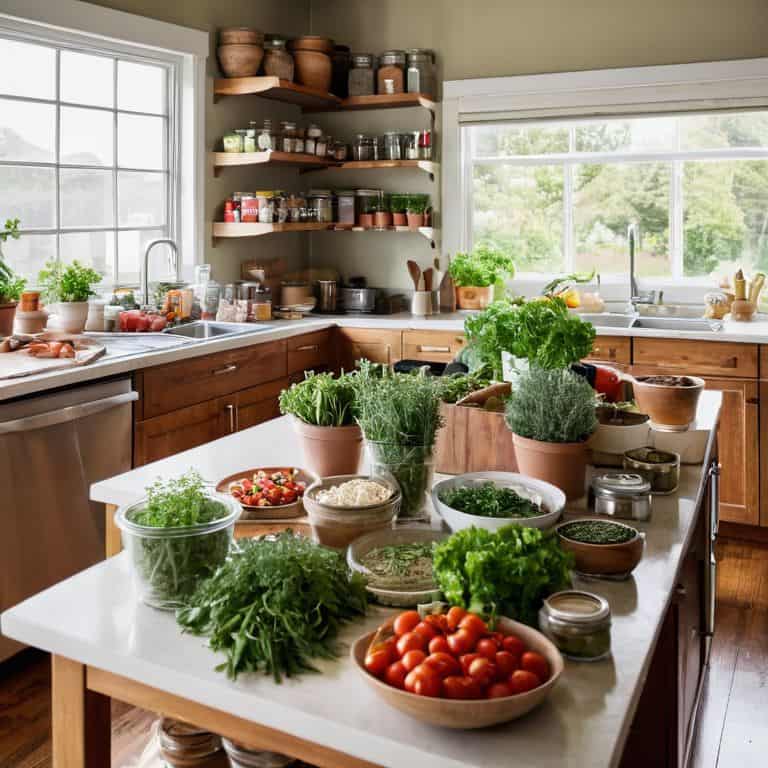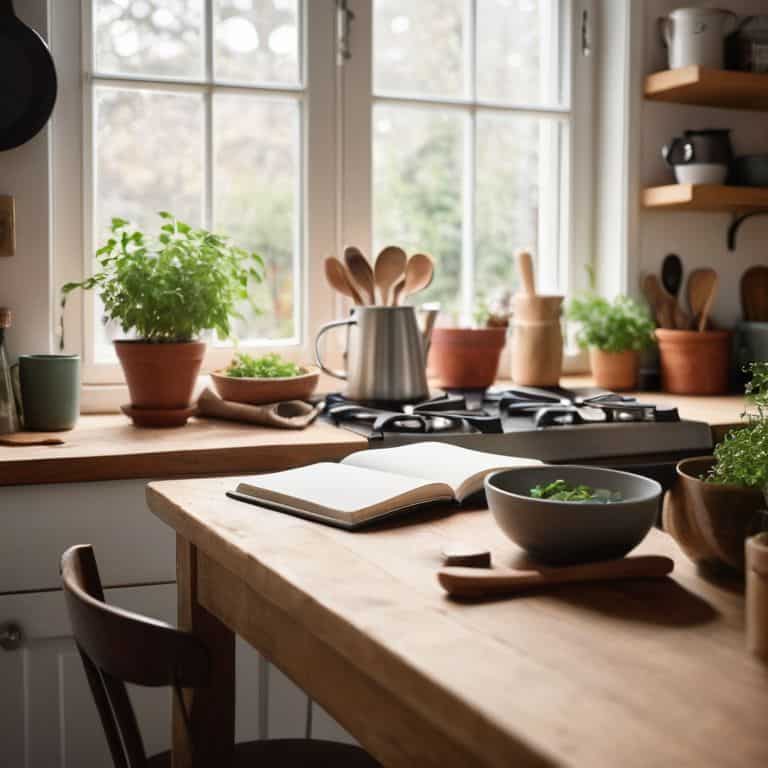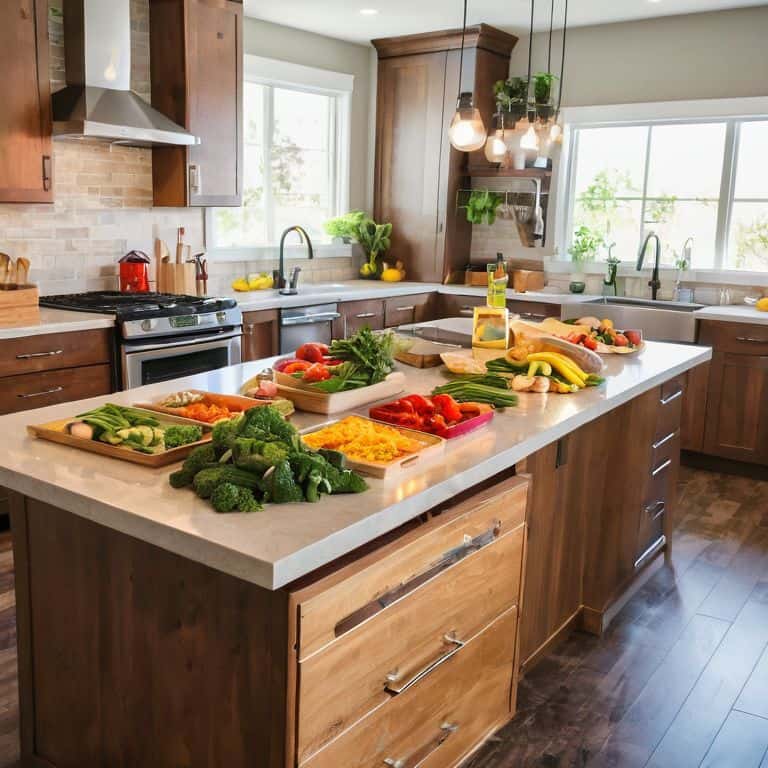I still remember the Sunday evenings I used to spend, stressed out about the meals for the week ahead, until I discovered a system for weekly meal planning that changed everything. It’s a common myth that meal planning has to be a tedious, time-consuming task, but I’ve found that with the right approach, it can be a game-changer for reducing stress and saving time. By implementing a simple, yet effective system, you can transform your kitchen into a haven of calm and productivity.
In this article, I’ll share my personal, no-nonsense approach to creating a system for weekly meal planning that actually works. You’ll learn how to plan your meals in a way that’s intuitive and easy to stick to, without feeling overwhelmed or restricted. I’ll guide you through a step-by-step process that will help you create a tailored meal plan that suits your lifestyle and preferences, and show you how to make the most of your time and resources. By the end of this guide, you’ll be equipped with the knowledge and tools to create a sanctuary in your kitchen, where mealtime is a joy, not a chore.
Table of Contents
- Guide Overview: What You'll Need
- Step-by-Step Instructions
- Mindful Meal Planning Sanctuary
- Cultivating Serenity in the Kitchen: 5 Essential Tips for Weekly Meal Planning
- Embracing Serenity in the Kitchen: 3 Key Takeaways
- Finding Harmony in the Kitchen
- Bringing Harmony to Your Kitchen
- Frequently Asked Questions
Guide Overview: What You'll Need

Total Time: 1 hour 15 minutes
Estimated Cost: $10 – $20
Difficulty Level: Easy
Tools Required
- Pencil (for writing down meal plans)
- Eraser (for correcting mistakes)
- Calendar or Planner (for organizing meals)
- Computer or Tablet (optional, for accessing recipes online)
Supplies & Materials
- Notebook or Binder (for storing meal plans and recipes)
- Printed Recipe Cards (optional, for organizing favorite recipes)
- Whiteboard or Chalkboard (optional, for displaying weekly meal plans in the kitchen)
- Pens and Markers (for coloring and highlighting meal plans)
Step-by-Step Instructions
- 1. First, let’s start by clearing our minds and focusing on the task at hand. Take a few deep breaths, and imagine yourself walking into a kitchen where every meal for the week is already planned out. This is what we’re aiming for with our weekly meal planning system. To begin, gather a few essential tools: a notebook, a pen, and your calendar.
- 2. Next, we need to assess our current situation. Take stock of the ingredients you already have in your pantry, fridge, and freezer. Make a list of what you have, and try to group similar items together (e.g., all the grains, all the proteins, etc.). This will help you see what you can work with and what you need to add to your shopping list. Remember, the goal is to reduce food waste and make the most of what you already have.
- 3. Now, let’s talk about meal planning strategies. Consider your schedule for the week, and think about what meals will work best for each day. Do you have any early morning meetings or late-night events? Plan your meals accordingly, and try to batch similar tasks together (e.g., cooking all your proteins on one day). This will save you time and energy in the long run.
- 4. With your meal plan starting to take shape, it’s time to make a grocery list. Go through your recipes, and write down all the ingredients you need to buy. Try to group items by store section (e.g., all the produce, all the dairy, etc.) to make your shopping trip more efficient. Don’t forget to check what’s already in your pantry, fridge, and freezer to avoid duplicate purchases.
- 5. Once you have your grocery list, it’s time to head to the store. Try to shop the perimeter of the store first, where the fresh produce, meats, and dairy products are usually located. These items are often the foundation of a healthy meal, and they tend to be more nutrient-dense. As you shop, remember to stick to your list, and avoid impulse buys that can derail your meal plan.
- 6. After you’ve returned from the store, it’s time to prep your ingredients. Take some time to wash, chop, and store your fruits and vegetables. Consider portioning out snacks and meals in advance to make your life easier during the week. This is also a good time to cook any proteins or grains that you can use throughout the week.
- 7. Finally, let’s talk about staying on track. To make your meal plan a success, you need to schedule it into your daily routine. Set reminders on your phone, or put notes on your fridge to remind you what’s for breakfast, lunch, and dinner each day. Don’t be too hard on yourself if you miss a meal or two – simply get back on track, and keep moving forward. Remember, the goal is to create a sustainable system that works for you in the long term.
Mindful Meal Planning Sanctuary

As we delve into creating a meal planning sanctuary, it’s essential to consider the benefits of batch cooking for beginners. This approach not only saves time but also helps in reducing kitchen waste by planning meals around ingredients that are approaching their expiration dates. By adopting this mindset, you’ll be able to create a more efficient and peaceful cooking environment.
To further enhance your meal planning experience, try incorporating seasonal meal planning strategies into your routine. This involves planning meals around the freshest ingredients available during each season, which can help reduce your environmental impact and create more flavorful dishes. By doing so, you’ll be able to nourish your body and soul with wholesome, seasonal foods.
In addition to these strategies, consider creating a grocery budget to help guide your meal planning decisions. This will enable you to make more intentional choices about the foods you purchase and prepare, ultimately leading to a more mindful approach to meal planning. By being more thoughtful and deliberate in your meal planning, you’ll be able to create a sense of calm and serenity in your kitchen, making the cooking process a truly enjoyable experience.
Nourishing Your Space With Batch Cooking
As we cultivate our Mindful Meal Planning Sanctuary, batch cooking emerges as a harmonious extension of our intentions. By preparing meals in bulk, we not only simplify our weekly routine but also create an opportunity to nourish our space with the aromas and flavors of wholesome food. Imagine the soothing ambiance of a kitchen filled with the scent of slow-cooked stews or the earthy aroma of roasted vegetables.
Batch cooking becomes a therapeutic ritual, allowing us to connect with the food we eat and the space we inhabit. As we chop, stir, and simmer, our minds calm, and our senses come alive. The act of cooking in bulk also encourages us to think intentionally about the meals we want to create, fostering a sense of mindfulness and presence in our daily lives.
Reducing Waste With Seasonal Meal Prep
As we cultivate our mindful meal planning sanctuary, let’s not forget the importance of reducing waste. By embracing seasonal meal prep, we can create harmony between our kitchens and the environment. This approach encourages us to work with nature’s rhythm, selecting ingredients at their peak freshness and flavor. Not only does this reduce food waste, but it also allows us to connect with the changing seasons and appreciate the simple joys of cooking with what’s available.
By incorporating seasonal meal prep into our weekly planning, we can create a sense of flow and continuity in our kitchens. This mindful approach helps us let go of the need for perfection and instead, focus on the beauty of simplicity and sustainability. As we chop, dice, and simmer our way through the seasons, we’ll find that our kitchens become a reflection of our values and our commitment to living in harmony with the world around us.
Cultivating Serenity in the Kitchen: 5 Essential Tips for Weekly Meal Planning
- Start your week with a ‘Kitchen Sanctuary Sunday’, where you dedicate an hour to planning and preparing meals for the upcoming days, setting a peaceful tone for the week ahead
- Create a ‘Meal Mapping’ board in your kitchen, where you visually plan out your meals for the week, using sticky notes or a whiteboard to make adjustments as needed, and making it a fun, creative process
- Implement a ‘One Ingredient, Multiple Meals’ approach, where you choose a single ingredient, such as a whole chicken or a bag of quinoa, and plan multiple meals around it, reducing waste and streamlining your grocery list
- Establish a ‘Pantry Pyramid’ system, where you categorize your pantry staples into three tiers: essentials, occasionals, and treats, making it easier to plan meals and avoid impulse purchases
- Schedule regular ‘Fridge Foraging’ sessions, where you take stock of what’s approaching expiration and plan meals around those ingredients, reducing food waste and saving you money in the long run
Embracing Serenity in the Kitchen: 3 Key Takeaways
By implementing a weekly meal planning system, you can transform your kitchen into a haven of calm and efficiency, where every meal is a mindful expression of nourishment and care
Batch cooking and seasonal meal prep are powerful tools for reducing waste and cultivating a deeper connection with the food you eat, allowing you to savor each bite and appreciate the simplicity of a well-organized kitchen
Ultimately, the true magic of meal planning lies not in the planning itself, but in the sense of serenity and freedom it brings to your daily life, allowing you to focus on what truly matters – cultivating a sanctuary that nourishes both body and soul
Finding Harmony in the Kitchen
A weekly meal planning system is not just about organizing your kitchen, it’s about orchestrating a symphony of self-care, where every ingredient, every meal, and every moment nourishes both body and soul.
Nathan Reed
Bringing Harmony to Your Kitchen

As we conclude our journey through the system for weekly meal planning, let’s recap the key points that will help you transform your kitchen into a sanctuary. We’ve covered the step-by-step guide to planning your meals, and explored the concepts of mindful meal planning and batch cooking. By incorporating these practices into your daily routine, you’ll not only save time and reduce waste, but also create a sense of calm and control in your kitchen. Remember, the goal is to make meal planning a therapeutic experience that nourishes both your body and mind.
As you embark on this new approach to meal planning, I encourage you to view it as an opportunity to cultivate self-care and intentional living. By taking control of your kitchen and your meals, you’re taking a significant step towards creating a more balanced and peaceful life. So, take a deep breath, let the aroma of freshly cooked meals fill your senses, and let the sense of accomplishment fill your heart. You’ve taken the first step towards creating a true sanctuary in your home, and I’m honored to have been a part of your journey.
Frequently Asked Questions
How can I adjust the weekly meal planning system to accommodate dietary restrictions or preferences?
To adapt your weekly meal planning system to dietary restrictions or preferences, simply “interview” each recipe, asking if it aligns with your needs. Consider substitutions, portion control, or exploring new cuisines that naturally fit your requirements, and don’t be afraid to get creative – it’s all about finding harmony between nourishment and delight.
What are some strategies for avoiding food boredom when planning meals a week in advance?
To avoid food boredom, I recommend introducing a ‘surprise meal’ each week, where you try a new recipe or ingredient. This adds an element of excitement to your meal planning, keeping your palate engaged and preventing monotony. You can also rotate between different cuisines or themes to keep things fresh.
Can you provide tips for scaling the meal planning system up or down depending on the number of people I'm planning for?
To scale your meal planning system, simply adjust the ingredient quantities based on the number of people you’re serving. For larger groups, consider batch cooking and freezing meals in advance. For smaller groups, halve or quarter recipes to avoid waste. Remember, flexibility is key to maintaining your mindful meal planning sanctuary.
